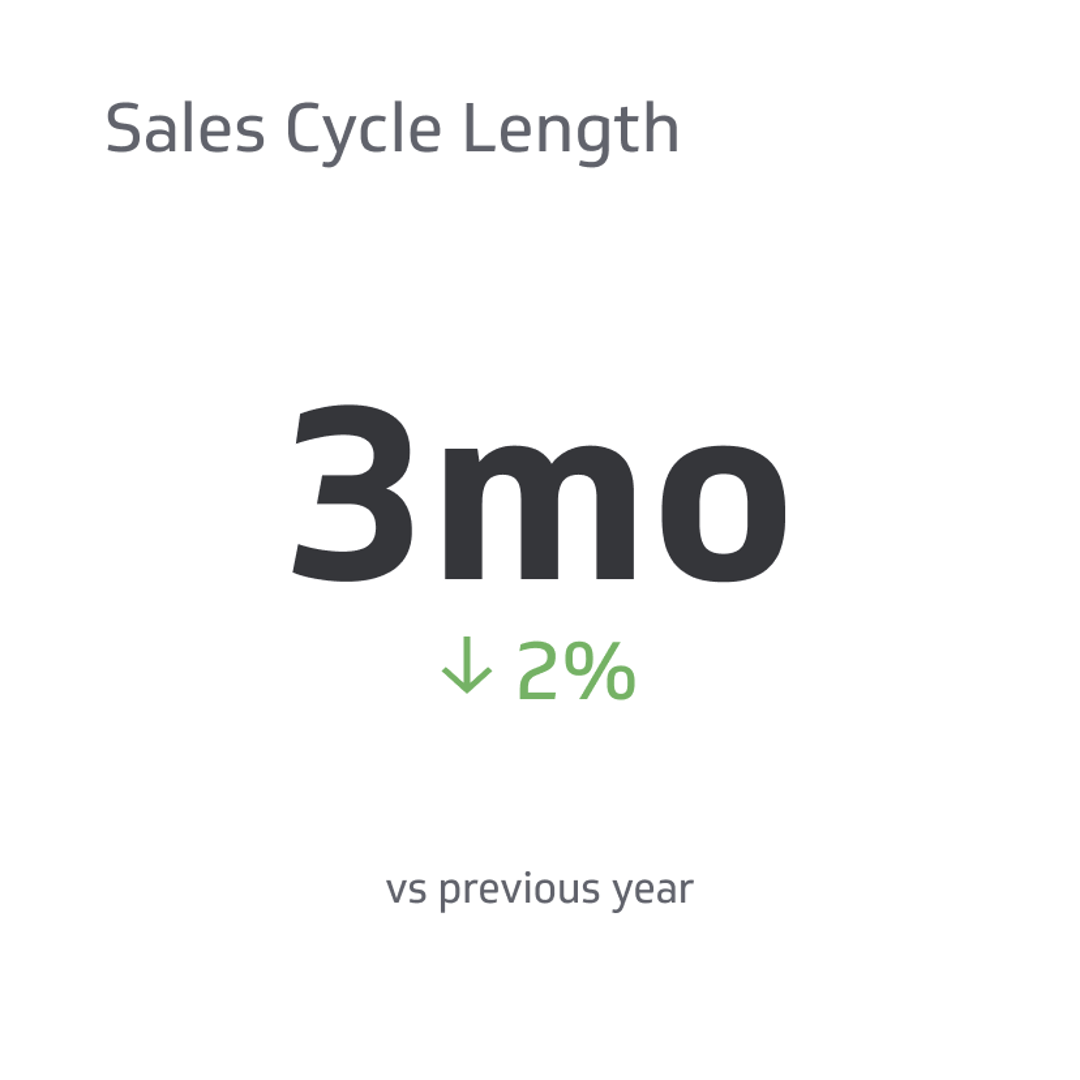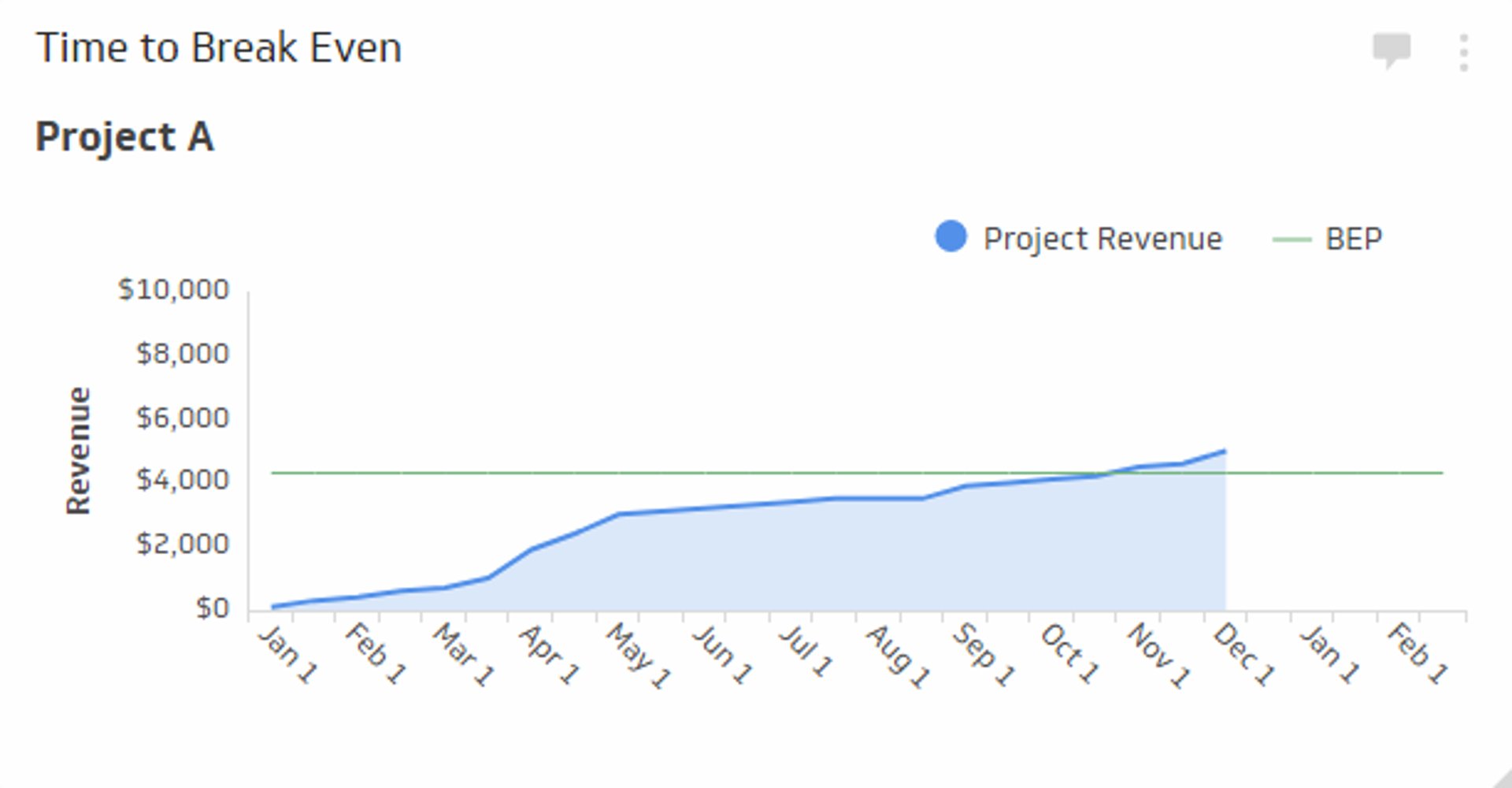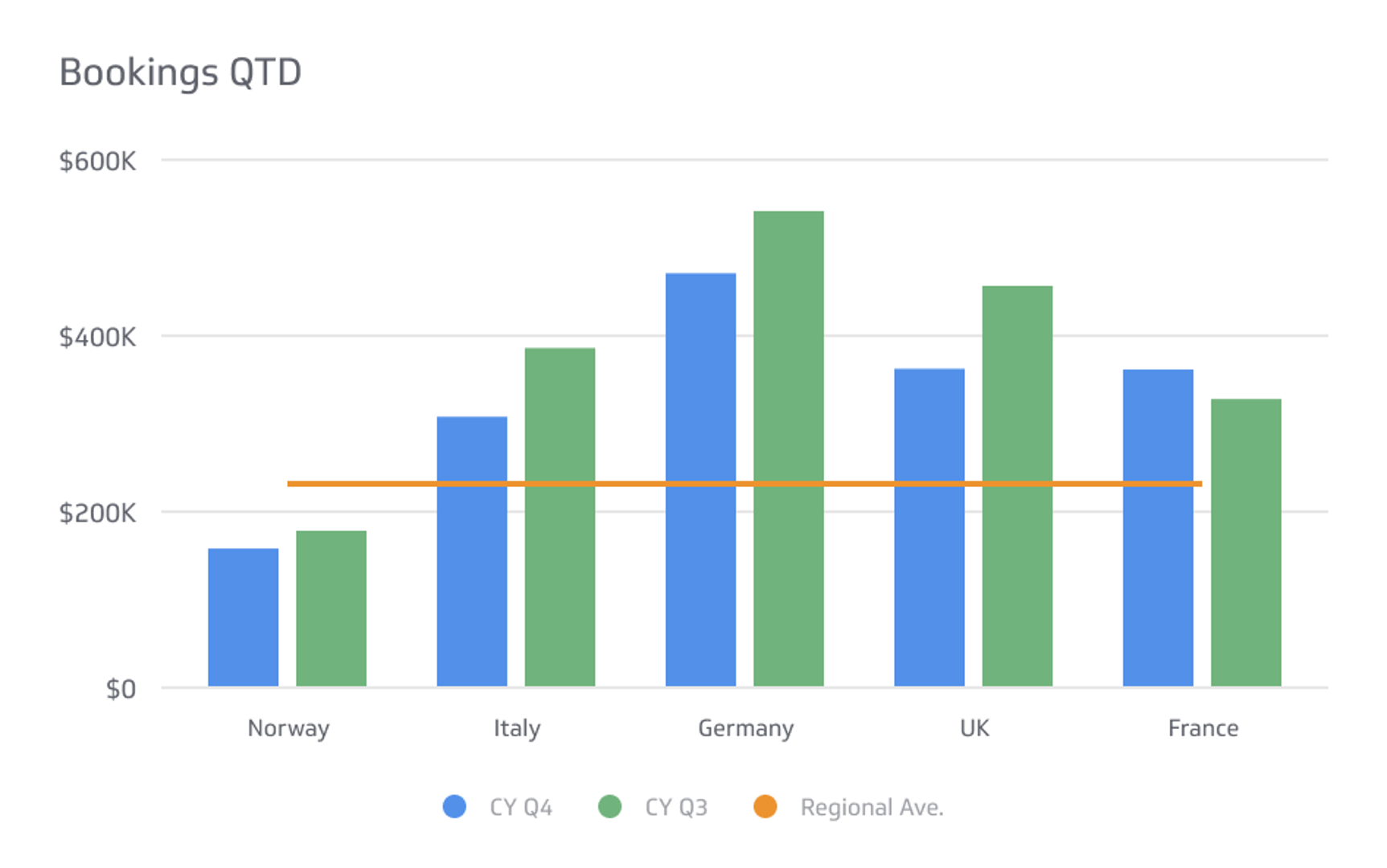Sales Cycle Length
The sales cycle is a crucial process where a sales representative identifies potential customers, establishes contact, persuades them to buy a product or service, and provides follow-up.
Track all your Sales KPIs in one place
Sign up for free and start making decisions for your business with confidence.

What is the significance of understanding the sales cycle length for every product or service you offer? Like every product has a life cycle, every process of selling that product has a cycle. That cycle is the "sales cycle," and mastering it can maximize the sales potential of a product, employees, and revenue growth.
In this article, we'll delve into the concept of the sales cycle, its duration, and why it's essential to have this knowledge for your business. So let's start without further ado!
What is the Sales Cycle?
The sales cycle is a crucial process where a sales representative identifies potential customers, establishes contact, persuades them to buy a product or service, and provides follow-up.
However, the length of this cycle is influenced by various factors, such as the product/service being sold and the target market. For instance, a newly launched product requires more time and effort from the sales representative to communicate its benefits to the potential customers.
Additionally, new customers may require more attention and guidance, which can lengthen the sales cycle. As they become regular customers, the time needed to sell them a product or service decreases, thus shortening the sales cycle.
Finally, uncontrollable events can affect a sales cycle. Uncontrollable events can include, but are not limited to:
- Fad that passes
- Competition catches the attention of customers
- Product or service that becomes obsolete
- Weather event or seasonal cycles that disrupts customer behavior
Likewise, a sales cycle can be lengthened if the right situation arises. A situation that could lead to a lengthened sales cycle can include, but is not limited to:
- A rejuvenated appreciation for the product by customers
- The need for a product or service grows after shrinking
- The price of the product or service is lowered to meet customer expectations
In all of these situations, the sales cycle lengthens or shrinks, or does both as part of the natural lifecycle of a product or service.
Why Do Sales Cycles Matter?
Understanding your sales cycle provides several benefits for your business, including:
- Anticipate high-volume days
- Project revenue growth
- Allocate resources and purchase inventory appropriately
- Manage cash flow and predict the revenue flow
Additionally, knowing your sales cycle allows you to monitor how your sales representatives are selling and whether they're properly following your standardized sales process.
Understanding how your products are typically sold can provide insights into which steps are most commonly followed and whether they contribute positively or negatively to your overall sales efforts.
Drawbacks of Sales Cycle Ignorance
On the contrary, lacking an understanding of your sales cycle can negatively impact your business in multiple ways:
- Accumulation of unsellable inventory
- Inventory glut
- Wasting revenue on slow-moving inventory
- Poor staff utilization
A business that neglects to grasp its sales cycle takes a significant risk by assuming that product sales will consistently remain high. This can result in costly consequences such as excess inventory, reduced revenue, and inefficient resource allocation.
What Goes into a Sales Cycle
The sales cycle is the time between identifying a target audience and associated leads and closing or losing a sale. There are seven steps in most sales cycles. Each plays a vital role in furthering that goal. Here are those seven steps.
Audience Identification
Identifying potential buyers for your products or services is called "prospecting." It involves pinpointing a target audience and progressively narrowing the focus until a business clearly understands its ideal prospective customer. This customer profile serves as a guide to target audience segments that align with the profile while exploring different markets.
Prospecting is also instrumental in identifying "qualified leads." These leads are individuals or entities that match the customer profile and demonstrate an interest in what the company offers. Alternatively, qualified leads can be determined through analysis by the sales and marketing teams, indicating a high likelihood of their genuine interest in the company's products and services.
Prep Work
Once a qualified lead is identified, the sales representative and marketing team will diligently gather information about that lead. The purpose of this research and information gathering is to be able to create the perfect pitch in order to close the deal. The research team will attempt to learn the following about a sales lead:
- Customer’s needs and desires in a product or service
- Customer expectations beyond needs and desires
- The price point of the average customer
Preparation for the sales push also includes learning the product or service inside and out. The more complete the knowledge of the product or service, the greater the chances of matching the product with the customer.
Approach
The approach to a customer includes how a salesperson broaches the topic of a sale to a potential customer. In many cases, the approach is already handled because the customer already has an interest in making a deal or buying a product or sale.
For instance, individuals visiting a vehicle dealership typically intend to explore vehicles, potentially test drive them, and even negotiate an offer.
However, in other scenarios, the approach becomes more significant. Many salespeople employ strategies such as direct and indirect advertising, email outreach, or traditional mail to establish initial contact. . The purpose of that approach is to narrow down interested parties even further.
If you can get a customer to respond to an email or click on a banner on a website, you have a greater chance of converting them than if you are using a “cold approach” method.
Presentation
During the presentation stage of the sales cycle, the sales team showcases the product to different audiences. Each presentation is carefully crafted and customized to address the specific needs and desires of the target audience.
This tailored approach ensures that the attributes and features of the product align with the requirements of the clients. For instance, when selling software, it is essential to highlight how the software precisely meets the clients' needs by emphasizing relevant functionalities and benefits.
Another aspect of presentations is offering interactive sessions with prospective clients where the potential client gets shown the product or service in real-time. During the session, the system operates as the prospective client would use it, giving them a sense of how it meets their needs. The real-time approach works particularly well with IT products and services.
Addressing Qualms
While it would be ideal for every customer to immediately sign up for a product or service a sales team presents, the reality is often different. In real life, potential clients often have concerns and reservations that must be addressed before purchasing.
A sales team must spend time with clients to map out their issues, return to developers, and review their concerns. After receiving answers to the concerns, the sales team will meet with the prospective client and show them how their issues are addressed in the product or service.
If the potential clients' concerns are addressed, the sales team can move forward to the "end game" of the sale. However, addressing concerns can prolong the sales cycle.
Closing
The closing stage of the sales cycle is significantly more intense than the earlier stages of public relations and pitching. Closing the deal may require multiple meetings, whether through phone calls, video conferences, or in-person interactions. During this stage, the sales team makes a focused and persuasive effort to convince the client to commit to the purchase.
The intensity of the closing stage arises from the high stakes involved for the sales team. They have invested significant time and effort, often spanning weeks or even months, to bring the client to this critical point. The pressure to secure the sale and achieve their goals weighs heavily on the sales team during this stage.
Follow Up
After a client commits, the sales team moves onto the delivery phase, which can take several days or weeks, depending on production and client schedules. Although the sale is completed, the team puts in a lot of effort to ensure a smooth transition and convert the client to a recurring customer.
The follow-up process involves training the client's staff, troubleshooting any issues, and maintaining communication with the client. By doing so, the sales team demonstrates that the client is still important to them, even after completing the sale. Teams that spend time with clients after the sale build political capital they can use when they need to make another sale.
How To Calculate a Sales Cycle
To calculate your sales cycle, follow these steps:
- Determine the total number of days it took from the identification of a prospective client to the point of closing the sale.
- Divide the number of days by the number of deals you or your sales team made.
The resulting number represents the average length of your sales cycle. For instance, let's consider your department's sales in one quarter with the following breakdown:
- Sale 1: 50 days
- Sale 2: 80 days
- Sale 3: 30 days
- Sale 4: 120 days
Adding up the days, the total is 280. Next, divide 280 by the 4 sales, resulting in an average of 70 days. Therefore, the average sales cycle, from client contact to closing, is 70 days.
How To Use the Sales Cycle Total
The average length of a sales cycle for the example above is 70. With that number, a manager can estimate that closing a similar amount of sales will take around 70 days. From that number, a sales team and management can assess what customers are high probability and extrapolate when the business sees revenue from those sales.
Industry Variables
While the sales cycle calculation provides a useful estimate of the time required to close sales, industry-specific variables can complicate its straightforward application. These variables include, but are not limited to:
- The complexity of the customer: Larger organizations typically require more time to close deals due to their intricate decision-making processes and the multiple stakeholders involved.
- The number of decision-makers: The more decision-makers are involved in the buying process, the longer it may take to reach a consensus and close the sale.
- Payment terms and contracts: Products or services requiring complex contracts or negotiations may extend the sales cycle.
- Customer familiarity: If the customer is unfamiliar with the product or its benefits, additional time may be needed for education and building trust.
- Price: Higher-priced products or services often involve more extensive evaluation and approval processes, resulting in a longer sales cycle.
- Logistics: Factors such as delivery dates, product implementation, training, and troubleshooting can influence the duration of the sales cycle.
These variables, along with other potential factors, can introduce delays and complications throughout the sales cycle. The more the sales team knows about potential problem areas, the more completely they can plan on how to overcome them.
Final Thoughts
To sum up, the sales cycle length is a critical sales metric that businesses must understand and calculate to succeed in a competitive market. By identifying the time required to convert prospects into customers and close deals, businesses can optimize their sales potential and increase revenue forecasting.
Ultimately, businesses that can efficiently manage their sales cycle length can make data-driven decisions, improve sales performance, and drive business success in today's fast-paced and challenging environment.
Related Metrics & KPIs



